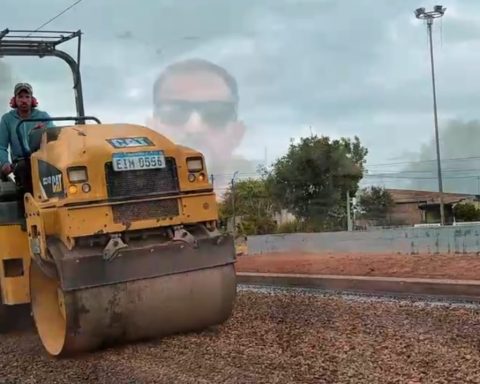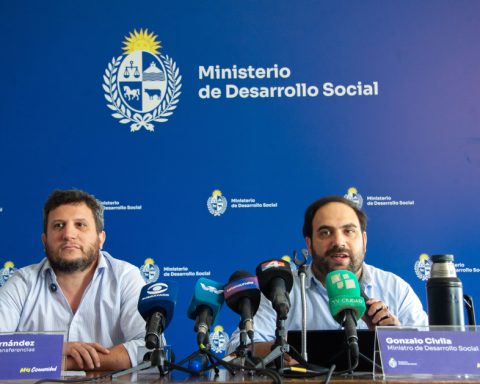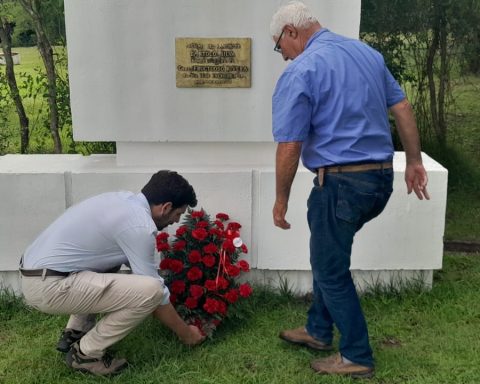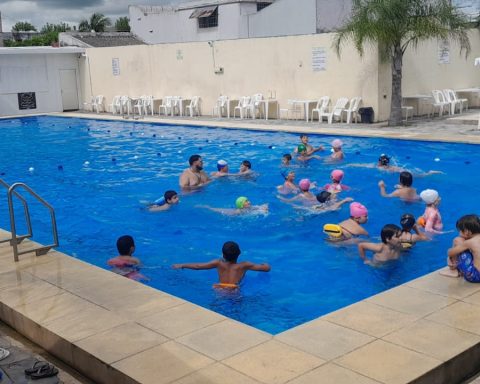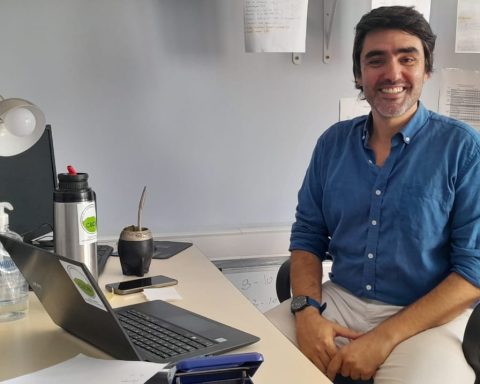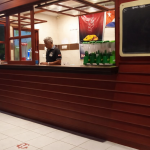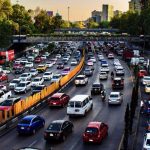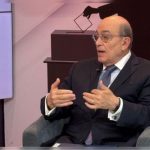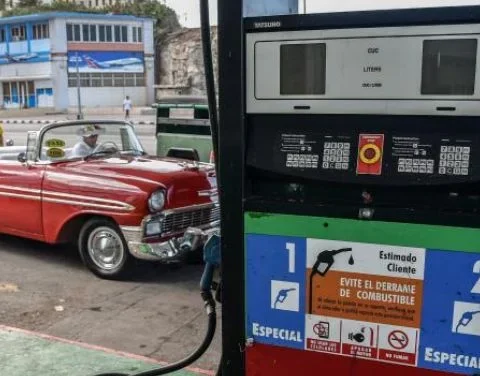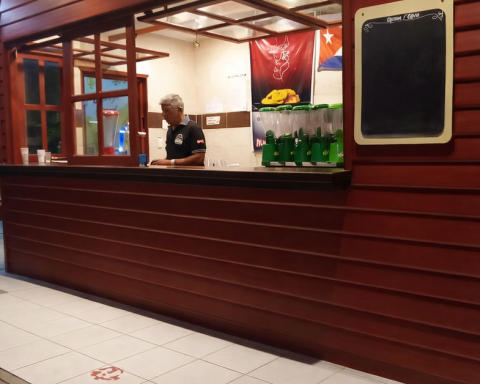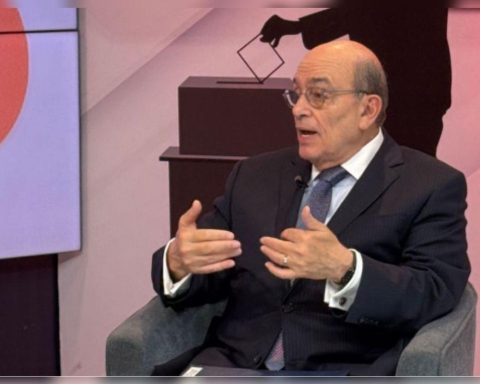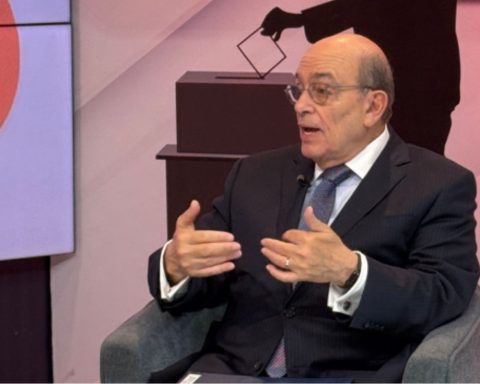Two new documents on the curriculum transformation —which are still in the draft phase and to which he had access The Observer— reveal that the change in the classrooms will begin in March 2023 in all initial education, in the first and second years of school, as well as in the first and second of high schools and UTU. But, unlike what was foreseen in the roadmap drawn up by the National Administration of Public Education (ANEP), innovation in high schools will be relegated to a later stage.
“The baccalaureate implies more actors, more interested parties and more complexity in what the existing offer is today”, recognized the director of Educational Planning, Adriana Aristimunowho explained that “the idea of (putting together) a general high school is still on the table.”
In this sense, one of the new documents, prepared by nine teachers, who rethought the structure of the educational system and that will be taken as inputs by the ANEP, hints that the reform (if materialized) will not shake the foundations and will go for “what is possible.” At least it will not eliminate the division between Secondary and UTU (a distinction that is tending to be suppressed in lower secondary education in the world). Nor will it leave the classic subjects without effect, but instead proposes project-based work (as is already the case in almost a third of educational centers) and that there be disciplinary fields that bring together familiar subjects (as is also already the case).
Javier Lasidapresident of the National Institute of Educational Evaluation and who represented the Independent Party at the discussion tables on the curricular transformation, had asked that the reform “get involved” in discussing the relevance of the subjects and that a student goes from having a teacher (at school) to 12 teachers in the first year of high school.
Artistimuño agrees with the claim: “Over the years, many years, it is likely that there will be another curricular transformation that changes the subjects. But this time it will not be possible, it is too complex”.
Hence, the model suggested by the authorities resembles an extension of the centers Maria Espinola: teachers from different disciplines work on common projects, students are in the local for an extended time and teachers concentrate their work in a single institution for several years.
The transformation, as it is written on the papers, will not eliminate school and high school grades. “They are still important to order,” explains Artistimuño. But another document The new one —prepared by more than 24 teachers, psychologists and pedagogues who studied what should be the learning progressions of students as they advance in formal education— implies that the progress of students cannot be evaluated by grade and admits as probable the elimination of repetition in some grades of school and high school.
The two documents agree on that. “Link the system of accreditation and summative evaluation (with qualification) to more extensive periods such as cycles or sections”, says the draft of the group of structure. In practice, it means that a student will not be able to repeat in the first year, but only when the cycle ends (for example, that the teacher passes the line only in the third year). The document proposes that in high schools there is promotion or “in the process of promotion” the first year. Second, that there is promotion or compensatory activity with final evaluation. And the repetition would only occur in those who, upon finishing second, do not pass the evaluation in February (prior to the beginning of the third year).
The health emergency because of the new coronavirus was an accelerator of that idea. “What was achieved in the pandemic, such as assisted promotion, is where the trend is going,” says the director of Educational Planning.
The pandemic It also favored schools (to a lesser extent in high schools and UTU) to emphasize formative evaluations, those that do not include grades and allow the student to measure how they are progressing.
This makes special sense in a transformation that is based on competencies and not in content: it is no longer enough to know a Philosophy treatise by heart, but in how what is said in that treatise serves to argue before a problem.
In this line, the document of the progression team breaks down and lowers to the ground the ten competencies that the ANEP set in the curricular framework (the base document that, it is assumed, this month will have the final approval of the Codicen).
the descent to earth
Five ANEP technicians work against the clock to, in less than two weeks, submit to Codicen a summary of the criticisms and modifications to the base document (or curriculum framework) that the different actors consulted did. This includes the complaints of the technical-teaching assemblies (ATD), a report by the counselor representing teachers Daysi Iglesias, the request of some directors to explain body awareness and another twenty files.
While that progresses, a team of more than 24 professionals tried to lower the ten competitions of the base document. Those “knowledge, skills and understanding necessary to solve complex situations” that sound very nice on paper, but very abstract in practice.
The doctor of education Veronica Zorrilla, who works in the Ceibal Global Learning Network, led this group that took the theoretical definition of each competency, broke it down into constructs or dimensions, and in each dimension outlined what concepts it would include. That is to say: what achievements a student is expected to achieve as they learn with the aim of graduating from formal education with the profile established in the base document.
For example: one of the new skills, one of those that has been gaining relevance in compulsory education in recent years, is computational thinking. The theoretical definition is: “The person identifies which aspects of the real world can be modeled or systematized algorithmically and which problems can be solved with the use of computational logic and technology”.
The team led by Zorrilla divided that definition into different dimensions. One dimension, to continue with the example, is “problem solving”. So what milestones in their educational journey is the student expected to have as they learn about problem solving? The team divided the progressions into five steps or milestones. The first level is the one expected for when the Obligatory education (in four years of initial), and the fifth is the one that every high school graduate should have. But that doesn’t mean that, along the way, progress on those milestones is tied to a specific age or school grade. A student may be in a second step in a certain dimension of communication, but in the first level in critical thinking. And that is where the classic scheme of graduated classes that exists today in Uruguay breaks down.
To continue with the example of problem solving: when compulsory education begins, the student “proposes solutions and tests. Use decomposition in simple problems and identify patterns that are repeated. It finds bugs in the solutions and summarizes them as part of the solving problem. It is the typical capacity that the student acquires when he plays multiple choice problems or to escape from a maze.
Then escalate to: “Recognizes simple problems in your school, family or everyday environment”. It is no longer just the game in the abstract. If I run out of soap, how do I wash my hands? What do I do with the garbage if the bin is full?
At a third level, he is able to “recover own solutions or foreign to adapt them to the environment”. For example: designed garbage cans with classifier and spare in case they fill up.
Further on, “a problematic situation in the environment is identified by a part that admits a computational solution”. The garbage was filled: what if I prepare a spreadsheet with the average number of days it takes to fill it, how do I control the temperature and calculate how much is used for composting the garden?
And finally “identifies, analyzes and evaluates possible situations to solve with solutions algorithmic”. That is to say: it is already capable of, when faced with certain problems, finding logical sequences that can be programmed and serve to automate a solution: from a sensor that measures when the garbage can is being filled, to a robot that empties the content and the subsequent alternative energy generation.
With this example, Zorrilla explains that “this forces us to work more based on projects, it helps the teacher to organize himself to plan his classes and the contents are at the service of reaching competencies”. Much more if one takes into account that some competences are about emotions or communication.
Although it sounds logical and something that is already being implemented, Aristimuño insists that “this was never written, visible to teachers, and in secondary education that search for solutions to problems of daily life is hardly done extensively… teachers continue to anchor themselves to the contents of a program and do not dialogue with each other”.
In fact, the programs and plans will change to adapt to these progressions, which will also be the basis for saying what is expected as the minimum acceptable at the end of each section.
In that sense, the Administration is against the clock. Because before the spring break, in two months, training is expected to begin for preschool teachers, for first and second year teachers, and for first and second year high school and UTU teachers with the aim that in March 2023 the curricular transformation begins in those grades. This means that all documents, including new programs, must be approved by Codicen by then.
